Suede and White Lies producer Ed Buller on the evolution of guitar-band production
The Britpop production hero talks about the changing face of band recording, the art of synthesis and method-composing with Hans Zimmer.
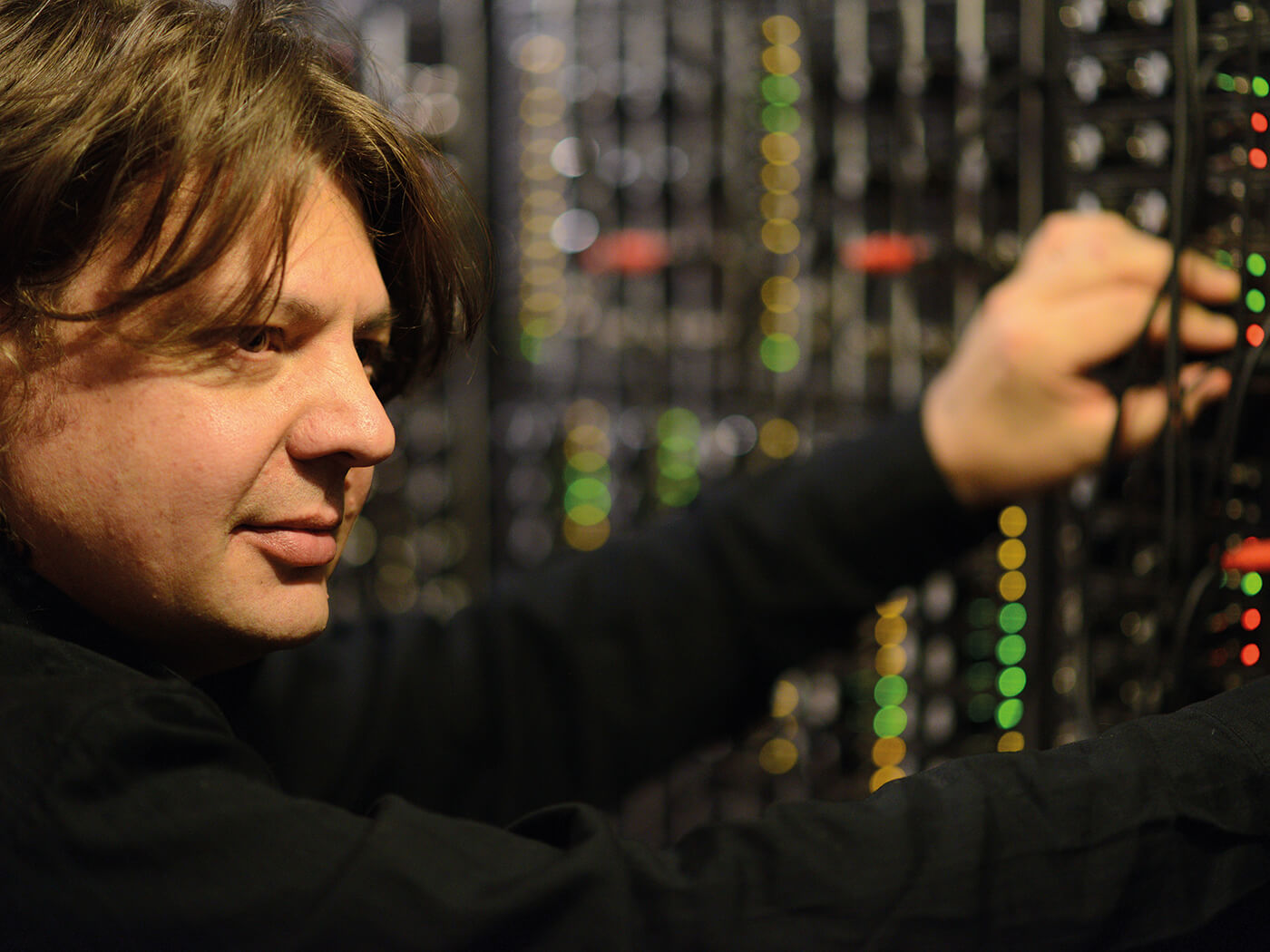
“It’s more than just asserting dominance,” says veteran producer Ed Buller. “It’s about saying, ‘Look you’ve hired me, I know what I’m doing and I’m telling you that you don’t have a chorus’. It’s like going to a lawyer for legal advice. You have to be straightforward.” Here, Buller is unequivocally making the case that producers should be far more than shadowy behind-the-desk figures. Within the world of UK guitar bands, in which Buller has worked for the bulk of his career, he has administered this fearless approach with the likes Pulp, Suede, and Slowdive, all in the constant pursuit of perfection. “Sometimes, for the good of the song, you just have to go back to the drawing board.”
Electric dreams
Hailing from Mickleham, Surrey, Buller fell in love with the wonder of sound at a young age. “My dad was a composer, so that interest was sort of pre-programmed in me,” he says. “A little later on, when I was a teenager, I started getting into bands. T. Rex were a particularly big influence on me.”
Though Bolan’s brand of fey chart-bothering pop had its hooks in the young Buller’s heart, it took the arrival of a new breed of electronic instrument to truly reveal to him the creative potential of music. “I got into synthesizers in a big way,” he says. “It was a very early period for synthesizers though and, again, part of this came from my dad. He was an early user of synthesizers in an orchestral setting. The EMS synth designer Peter Zinovieff had a studio in Putney and my dad became friends with him, along with the composer Harrison Birtwhistle, who gave my dad a lot of help in the early days, and used these impressive-looking new machines, which back then were massive.”
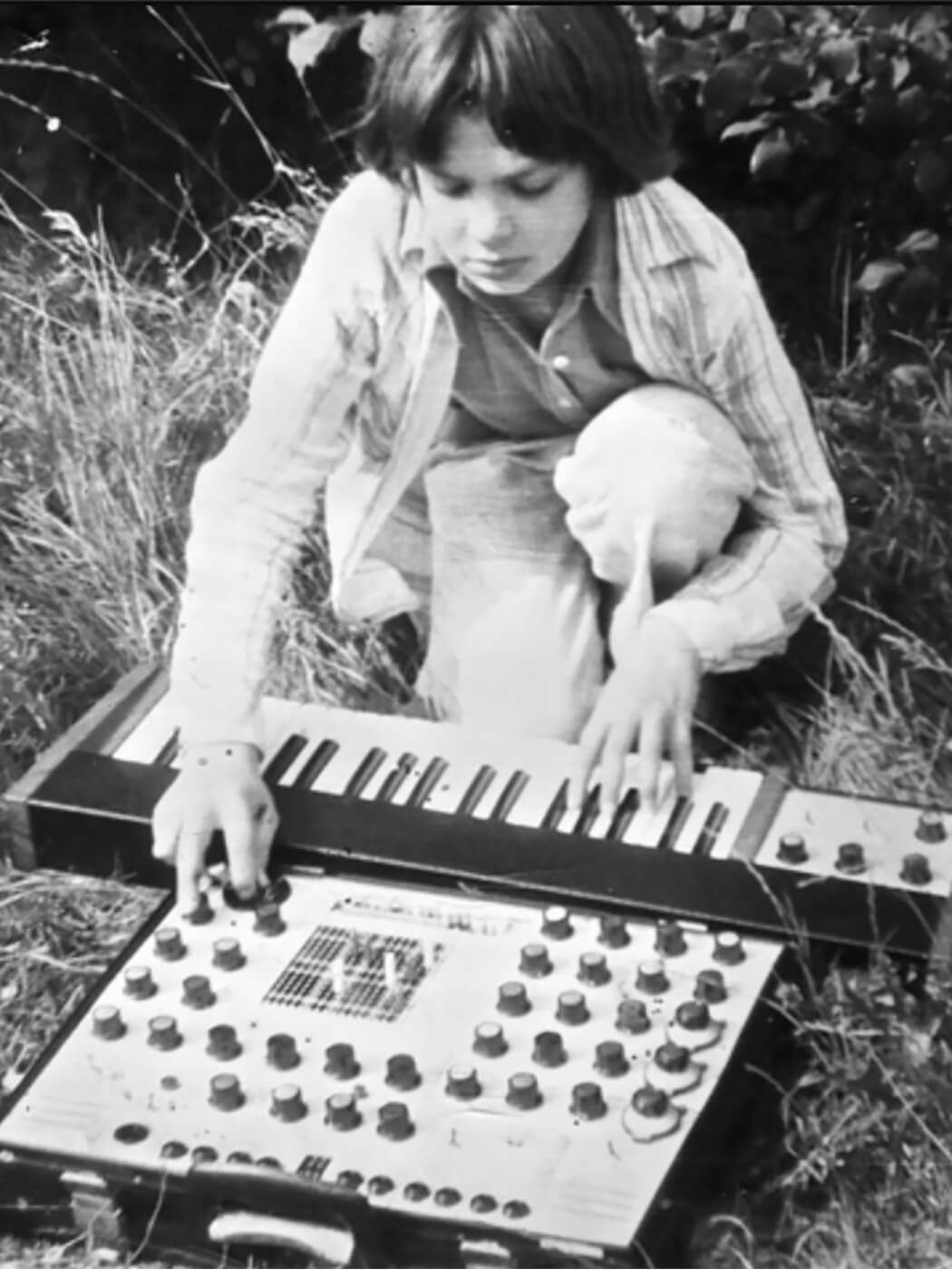
Luckily for Ed, his boarding school in Reading was next door to the local university, whose music department just so happened to have a synthesizer. ”Nobody could make it work,” he says. “But, because it was a Synthi A, I could. They ended up giving me a key. I came and went as I pleased.”
After moving to London in 1980, Buller was spotted by John Ashton from The Psychedelic Furs. “He used to come into Soho Soundhouse, the shop I worked at,” says Ed. “He asked me to play on their demos.” Ed joined the Furs full time in 1982 as a live touring member, and remained until 1986. “I always wanted to be in a band and be a pop star, I suppose,” he says.
“But it was during my time with The Psychedelic Furs that I realised the sort of personality that was required to be a frontman – and it wasn’t me, nor somebody I wanted to become. We made a record with Keith Forsey and I learnt a great deal from him. It was the first time I’d met somebody who just walked into the studio and took charge straight away. It made me realise that the main thing I loved about my favourite records was the sound of them, and how they’d been put together.”
By 1987, Ed had departed the Furs and become an in-house engineer at Island Records. “Island had a studio downstairs called the Fallout Shelter,” he says. “It was a fantastic place to work as an engineer. It was run by a lovely man called Trevor Wyatt. He was one of the original Island people, from the early days of the company. I acquired a lot of production knowledge there.”
“Quite often, we’d get a bunch of B-sides from the bands. We’d start at 10pm, work through the night, and then Trevor would come in at 8am. We’d be completely knackered but we’d have to play it back to him. It trained me as a working producer. It honed my ear, and I gained the ability to be in charge and look after bands, especially when we’d only have something like five hours to record six songs.”
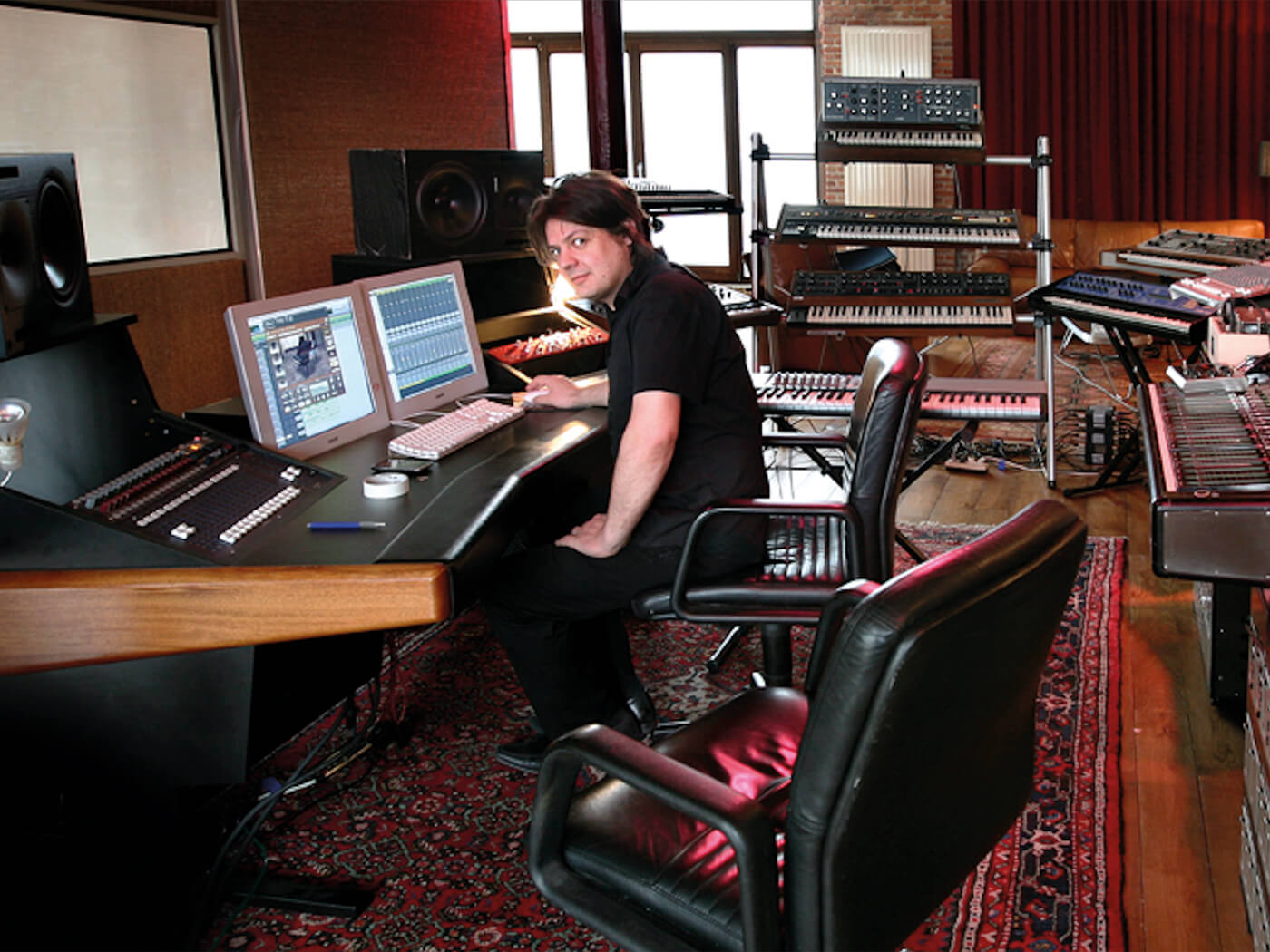
Coming up
Buller’s Island fixture helped him gain vital experience and, soon after, he chose to embark on his own path as a freelance producer. Working as a mixer and co-producer with the likes of Slowdive, The Boo Radleys, and Spiritulialized, he quickly achieved a lofty status in the eyes of his peers, having produced records by some of the era’s most notable artists. A few such albums are Pulp’s His ’n’ Hers and Suede’s Mercury prize-winning self-titled debut.
“When I first met Suede, I noticed that they all had a shared energy and an utter belief in their music,” says Ed. “The stuff they were writing was so good and so different to everybody else at the time. I’m a child of the 1960s, so when I first heard The Drowners, I was blown away. We formed a pretty good – and lasting – relationship straight off the bat.”
Buller’s production expertise helped the band live up to the giddy hype of the music scene, with their debut – at the time the fastest-selling album in UK history – receiving critical acclaim upon its release in 1993. Pulp, however, had been in pursuit of a hit-making alchemist for almost a decade.
“With Pulp, I’d heard a track that I liked a lot, and started to work with them on what would become their first top-10 record, His ’n’ Hers,” says Ed. “It was a big success and helped make them one of the decade’s superstar bands.”
Ed would work on four more records with Suede, and is currently helming another LP with the ever-evolving five-piece. “Suede are one of those bands that, when you get involved with them, it’s all-consuming,” he says. “They can be high maintenance but with good reason. The whole band wants the end result to be good. I like working with artists who care.”
Ed’s typical process in the studio is dependent on the artist he’s working with. However, he has some tried-and-tested hardware setups that have served him well over the decades, and are can still be relied upon for a solid sound. “With a band like Suede, vocals usually go through a dbx 160XT compressor, then I’ll use a Teletronix LA-2A levelling amplifier,” he says.
“It depends on the song but, most of the time, the 160XT is at the end of the chain. So you start off with the LA-2A and massage it gently – use a bit of compression but don’t kill it. There’s always a few gnarly frequencies that you need to get rid of. Brett [Anderson]’s microphone is always the Neumann M49. In terms of guitar-cab mic’ing, it’s pretty much always Shure SM57s and AKG C414s. For bass, I tend to use a Neumann U47 FETs and an RE20.”
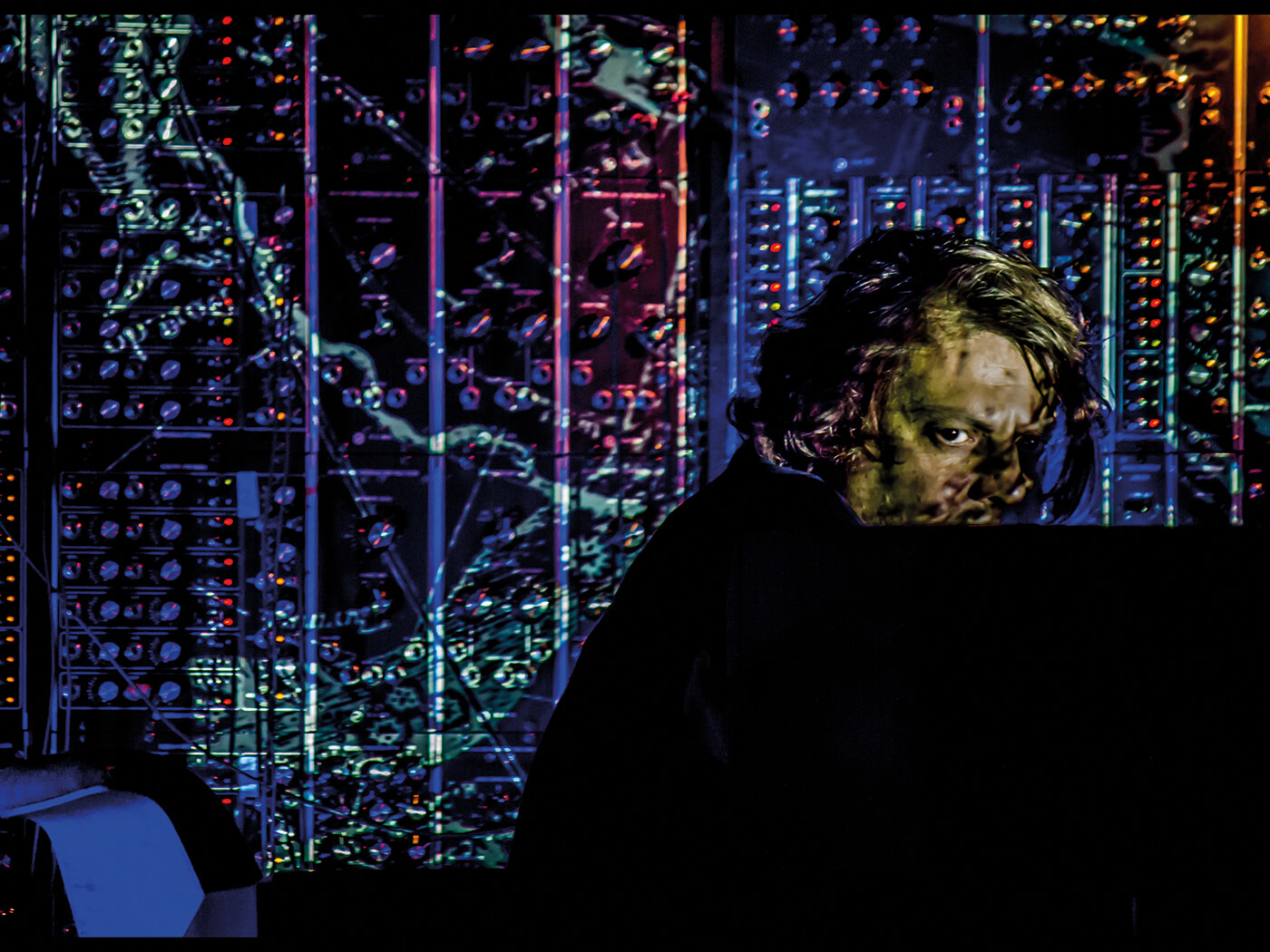
Patch therapy
As his production career blossomed in the 1990s, Buller also found time to pursue his keen interest in synthesis, which is as strong today as it was in his youth. Analogue synth-based collective Node is his outlet for all manner of modular tinkering. First established in the early 1990s, it remains an ongoing passion project.
“The beauty of Node is that we kind of make it up as we go along,” says Ed. “It was therapy really. It all came about after a party at 140db. It was the first Christmas party I attended, back in 1992. Flood was there – whom I was a big fan of – and he told me that he had a Moog modular. After that, I wouldn’t let him leave the party until he’d promised that I could come round and play it.”
“We had this discussion about how, as producers, we spend all our time and effort fine-tuning what goes down on tape, even though both of us had a massive appreciation for the music that came out of Germany in the 1970s, which was all live and improvised. The conversation with Flood basically came down to the question: ‘If you were in the studio with all of those amazing synths and all that gear, could you make something as good as the stuff we both loved?’”
There was only one thing to do. Flood and Buller had to try and answer that question. “During some studio downtime, I invited some of my friends over to experiment with some gear,” says Ed. “That eventually led to a couple of tracks that would end up on the first Node record, put out by Deviant Records. It was literally the most fun I’ve had in the studio. By that point, I was on my second Moog modular. I hadn’t built one, so these were still stock units. I bought a Moog 3P, which was £6,000. Then I bought two more…”
When asked about his methods when it comes to creating and sculpting synth music, Ed is quick to underline the joy of his processes. “It’s indescribably fun,” he says. “Basically, we’d all have our little areas. Then we’d put our headphones on and create a palette of sound. We’d briefly discuss it and agree on a key and some sort of scale, maybe there’d be a couple of riffs, but then we’d just go and play it all together. Each time you’d try and replicate what you did before but it’d always mutate. I would take the DATs home and, listening on headphones, write down timecode points on the DAT – this bit’s good, this bit’s crap, etc. It was the early days of Pro Tools, then called Sound Tools, and there was a guy called Matt who worked at KPM, who edited the lot together for me.”
About 20 years on, Ed and other Node members, Flood, Dave Bessell and Mel Wesson, decided to reconvene. “We’d been talking about it for a long time,” says Ed. “I’d moved to the US, then moved back here in 2005. I went to Flood’s place and we agreed to make another record. I’d started to rebuild my synths into one cabinet – I found a guy in Berlin to do it. At that point, Hans Zimmer saw it, rang me up and asked for one too, which meant giving him all my designs. It was flattering. If anyone knows synths, it’s Hans Zimmer!”
It’s this kind of creative freedom and flexibility that still sits at the heart of Node. “It’s totally driven by a love for what we do together,” says Ed. “Flood doesn’t say, ‘Lay off the pitch bend’. Everyone does their own thing, and you can tell by the mood in the room whether it’s working or not. It’s 180° different from directing a guitar band. You’re there because you enjoy doing it. It’s a constant journey into sound. The Moogs don’t behave themselves at all. With a plug-in, you know pretty much what the algorithms will sound like. But if you go to the toilet and come back to your Moog, everything will have changed!”
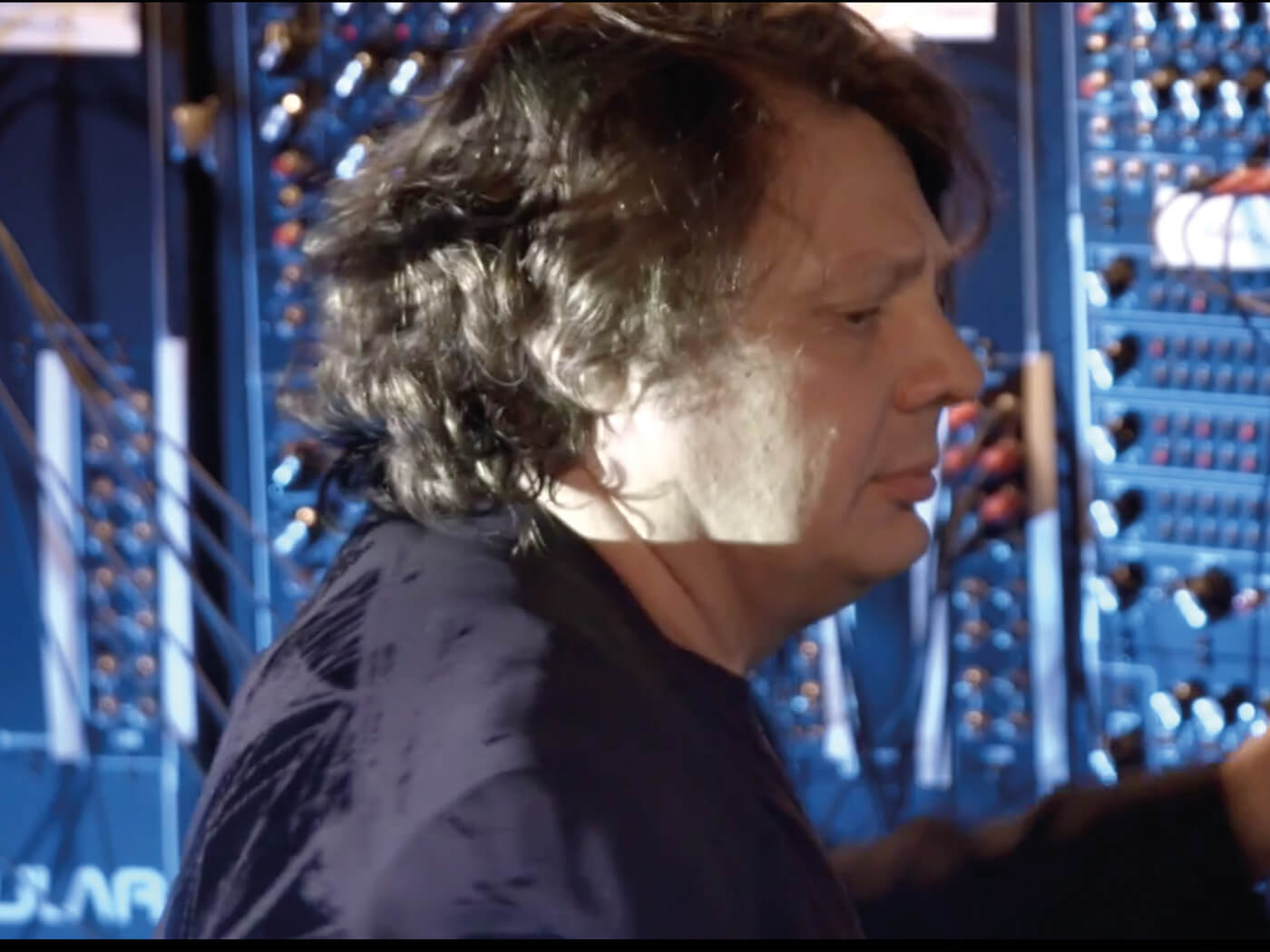
Helping Hans
Over the past 10 years, Ed has pursued a sideline career in soundtracking, working alongside perhaps the most world-famous composer on the planet, Hans Zimmer. Naturally, this partnership came with its pressures. “I have known Hans vaguely for about 45 years,” says Ed. “After he rang to ask for the modular designs, we stayed in touch. I got invited to the odd lunch and dinner. Then, in late 2014, I got an email from him that read, ‘I have an idea. Call me’.”
Having answered the email with enthusiasm, Ed was whisked away to LA to work on Neill Blomkamp’s sci-fi flick Chappie. “It was a dream job,” he says. “I basically sat in a room with Hans’ vintage synth collection, replacing plug-ins with the real thing, aided by a wonderful engineer called John Chapman. I managed to stay on for another film and worked with the Lovely Bob Badami who got me to write a few orchestral cues for The Little Prince, that ended up being recorded with a 100 piece orchestra at AIR in London. Hans has got the strongest work ethic of anyone I’ve ever met.”
“For example, we’ll be in a situation where we’re working on a movie and there’ll be a scene where there’s a common problem that needs fixing. Anybody else who has a 40-year career in something would rely on their experience to solve this. But Hans always sets himself up to reprove himself all over again. He will not want to just fix it. He will want a completely new solution, time and time again.”
In Ed’s eyes, it’s this hunger that marks Zimmer out as a leader in his field. “Hans could go to the beach and phone it in if he wanted to,” says Ed. “But he’s a real artist and puts himself through hell for this.”
Buller had to return to London to do a Node gig at the Royal College of Art but, in 2016, he moved back to LA to pick up where he left off. But the return trip wasn’t quite so smooth. “It wasn’t the same as my first trip,” he says. “My family hated living in LA and I felt like a fish out of water. I’d gone from being the captain of my own boat to scrubbing the decks on the biggest ship in the fleet. The work was different too. It was much less creative for me; I ended up cutting up MIDI on Dunkirk.”
Christopher Nolan’s World War II epic proved a difficult and stressful project for everyone, particularly Ed. “Hans came into my room one night and I foolishly mentioned that the place was tense,” says Ed. “Hans replied, ‘You’re on the beach being bombed by Stukas, what do you fucking expect?!’ He was being deadly serious. It’s method composing.”
Shell-shocked, Ed eventually left to work on some TV shows and films from his home in Thousand Oaks. “All in all it was worth it though,” he says. “I learnt a lot from Hans and his mixing engineer Alan Meyerson. The main tech there was a guy called Chuck Choi. He was very kind and taught me loads. A studio lives or dies on its tech, and Chuck is one of a kind. He’s never in a flap, the first thing he says when he walks in a room to fix something “what did you do?”
These days, Ed has streamlined his gear so that he’s less reliant on hardware. “It’s all software now,” he says. “I was a Pro Tools aficionado but, once I started working with Hans, I switched over to Cubase and that’s my primary DAW now. It’s way more user-friendly. The drum algorithms are much better than Pro Tools’ – note replacement and converting audio to MIDI is just so easy.”
“Pro Tools is so behind when it comes to MIDI. If I get in the studio and I’m making a proper record, I’ll source the hardware. Hans was showing me the UA Apollo and some of the UA plug-ins, and they sounded very impressive, so we’re getting to that place where the difference between software and hardware really isn’t that noticeable anymore. I just did a record in LA on a nice 1980s series Neve and it was fantastic. When you meet someone like Chris Kimsey and you see them work on a Neve console, you get it. It’s all about balance.”
The Surrey-born producer remains keen to adopt new technology into his approaches, though he still hankers for some of the studio icons of yesteryear. “I’d love an old Neve,” he says. “Or a Harrison MR3, which is probably my favourite desk of all time. You can’t make a bad sound on that. You can mash the EQ and it still sounds musical. Modern tech? I love FabFilter. Their stuff is awesome. I had an API plug-in in the studio that was pretty close to the 550s.”
“You could tell it wasn’t the same but it was pretty close. I just think there’s an interesting aspect to it. All of that technology was built to fix problems. It wasn’t there as an enhancement, it was there to fix issues. Now we’re at the stage where we have technology that emulates those machines that were there to fix problems. It’s kind of changed the way things work. The tape-warmth thing is such bollocks. You go back to Carravagio not being able to find the right paint brushes. You end up defined by your equipment.”
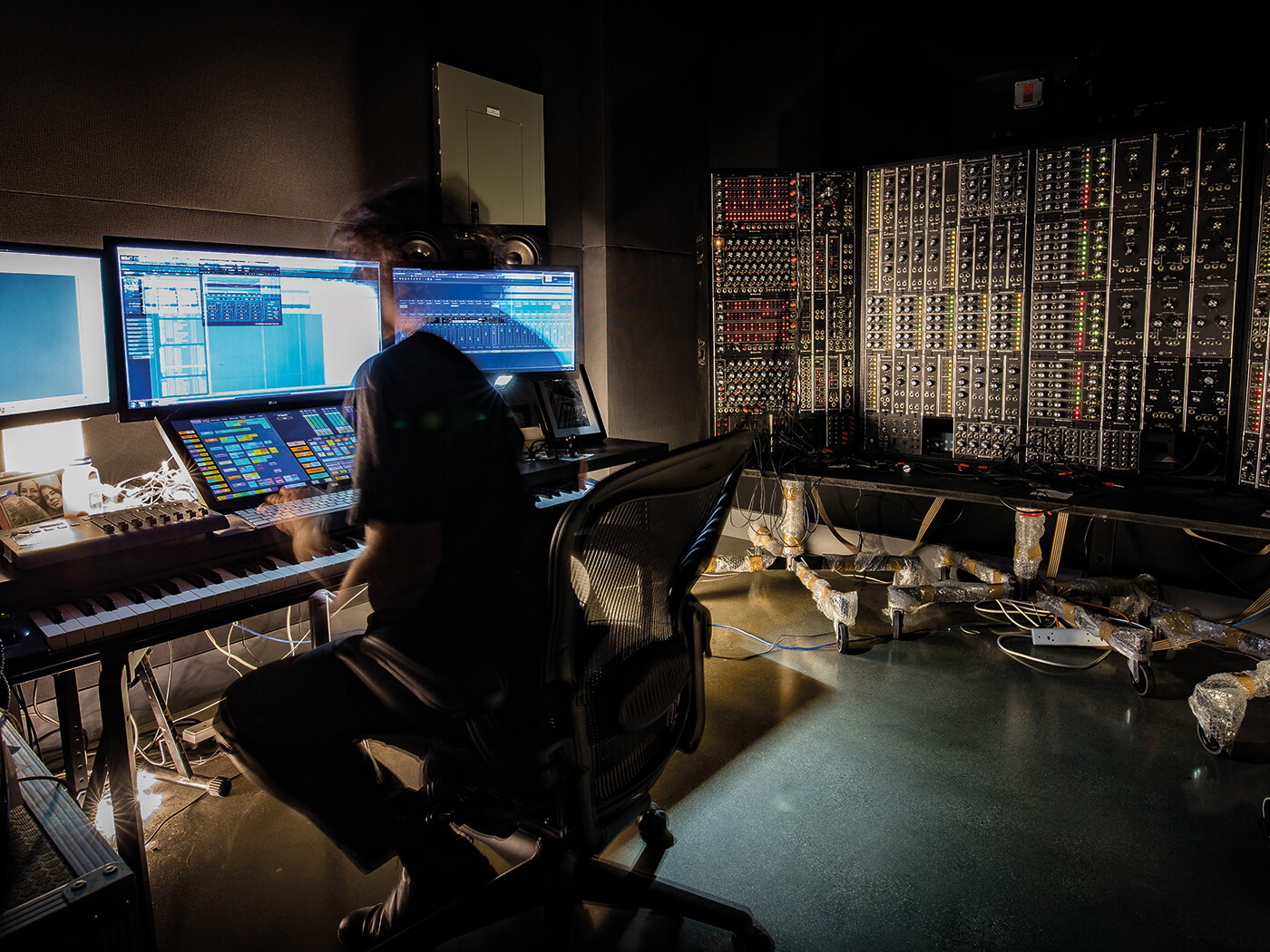
Ed-ucation
Figuring out how to produce a record can be a steep learning curve. Adapting to a professional mindset and directing the studio process can be steeper still. “The hardest part has always been telling someone that their work isn’t good enough and that it needs to be better. That’s never easy and always horrible. It’s part of the job though. You have to do it, especially if the artist thinks there’s nothing wrong. I try to be honest. You can’t get into trouble if you tell the truth.”
So what’s next for Ed? And where is his place in the ever-shifting sands of the industry right now? “The truth is that very few records will actually make you money,” he says. “The real problem is – and I can’t stress this enough – the money I used to make 10 years ago is 10 times what I make now. You’re doing the same amount of work but earning less and less. It’s a consequence of the internet and the number of bands around now.”
In his late career, then, Ed is keen to direct his attentions to the soundtracking world, in which he’s already gained significant inroads via his work with Zimmer. “I’m nearing the end of my career now as a producer,” says Ed. “I’m 57 and I’m taking the gigs that I want to take. I miss writing music but I stopped writing songs when I was about 25 and became a producer. I’m not resentful but part of me is aching to get back to writing. The reason I went to the US to work with Hans was because I had opportunities to write for a couple of films. I’m realistic enough to know that, at 57, I’m not going to become the next Hans. But my priorities have changed. I look at the music industry and think I’m lucky to have been involved when I was. I’m also aware that there are lots of young kids coming up who are making music and producing in their own way. That’s wonderful. I don’t want to compete with that.”

White noise
More recent behind-the-desk work has found Ed producing several records by the acclaimed White Lies, with whom he has enjoyed a healthy creative relationship since 2009. “I got a call in 2007 from Nude Records boss Saul Galpern, who was trying to sign them. He sent me one of their songs and asked if I was up for doing some production for them. There was no money at that stage but it was just to hang out with them and help them polish a B-side.”
“I asked them what else they had and they played me Death. I was like, ‘Holy crap, that’s the best song I’ve heard in a long time’. I offered to help them work on it. We spent a while at my house fiddling with it and I kind of won them over. I had to co-produce that with another chap called Max Dignel, which was quite difficult. But we didn’t kill each other and the record, To Lose My Life…, was great. I’ve learnt slowly but surely that having basic musical data is integral to the success of the song. Chords and melody are vital. White Lies totally get that forensic approach. They have become family.”

Discography
A selection of albums produced or mixed by Ed Buller:
- Suede – Suede (1993)
- Suede – Dog Man Star (1994)
- Suede – Coming Up (1996)
- Boo Radleys – Everything’s Alright Forever (1992)
- White Lies – Big TV (2013)
- White Lies – Five (2019)
- Pulp – His ’n’ Hers (1994)
- Slowdive – Souvlaki (mixing) (1993)
- The Courteeners – Falcon (2010)
For more artist features and interviews, check here.